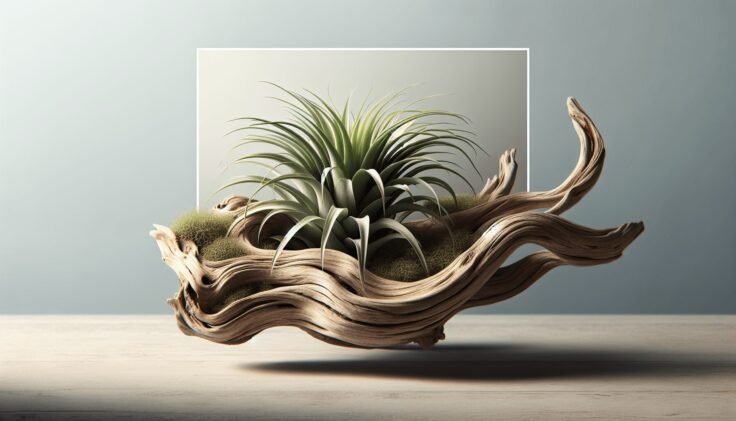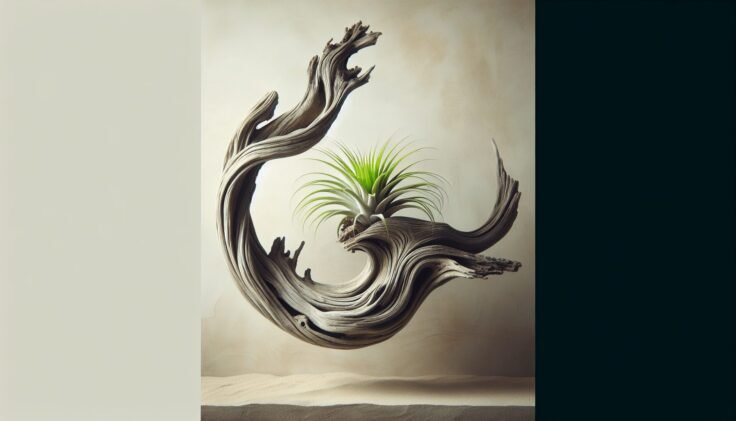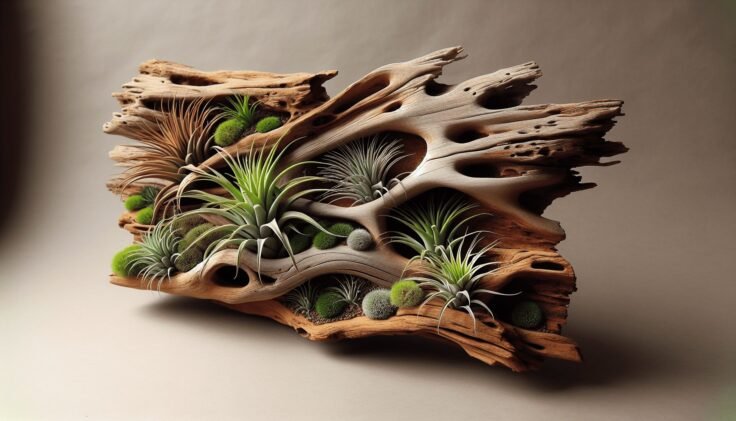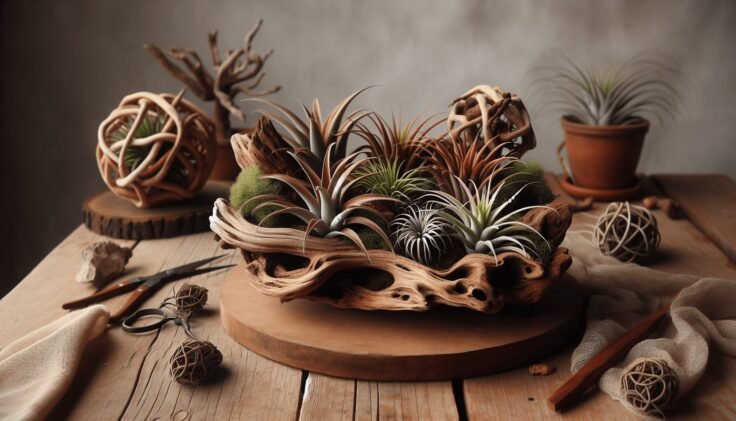Have you ever considered how bringing a piece of nature indoors could not only enhance your living space but also lift your mood? If this idea intrigues you, then a Driftwood Air Plant Hanger might just be the natural touch your home needs. Let’s take a journey together to understand this beautiful concept and explore how you can incorporate it into your living space. This article will guide you through everything you need to know about driftwood air plant hangers, so you can enjoy a piece of nature in your home.
Understanding Driftwood Air Plant Hangers
Driftwood air plant hangers are a harmonious blend of organic art and vibrant plant life. These hangers utilize pieces of driftwood to create a natural holder for air plants, offering both aesthetic appeal and a touch of nature’s simplicity. Let’s delve into the individual components and benefits.
What is Driftwood?
Driftwood refers to pieces of wood that have been washed ashore by the natural movements of tides. Over time, these pieces become naturally smoothed and uniquely shaped by the water, making each one distinct. Driftwood is not only valued for its aesthetic qualities but also for its eco-friendly nature, as it’s essentially a recycled natural material.
What are Air Plants?
Air plants, scientifically known as Tillandsia, are epiphytes, meaning they don’t require soil to grow. They absorb moisture and nutrients through their leaves, making them incredibly low-maintenance. Air plants thrive on air, making them perfect candidates for hanging displays. Their resilience and varied shapes add a creative flair to any space.
Why Combine Driftwood and Air Plants?
The combination of driftwood and air plants creates a living piece of art that brings the rustic beauty of nature into your home. The organic form of driftwood paired with the vibrant, sculptural look of air plants provides a unique focal point. Plus, this combination requires minimal upkeep, making it ideal for anyone looking to add greenery to their space without much fuss.
Choosing the Perfect Driftwood and Air Plants
Creating your own driftwood air plant hanger starts with selecting the right materials. This section will help you choose the best driftwood and air plants for your project.
Selecting Driftwood
When selecting driftwood, consider its size, shape, and texture. The driftwood should have natural crevices or holes where air plants can nestle securely.
Size: Depending on where you plan to hang your creation, consider the size and weight of the driftwood. Larger pieces work well as statement pieces, while smaller ones are perfect for limited spaces.
Shape: Look for interesting shapes that will complement the air plants and fit the aesthetic you’re aiming for. Curved or twisted pieces often provide a dynamic backdrop.
Texture: The texture of driftwood can affect how air plants sit on it. Rough textures can hold plants more securely.
Choosing the Right Air Plants
Air plants come in various shapes, sizes, and colors. When choosing air plants for your hanger, consider the following factors:
Variety: Mix and match different types of air plants to create a visually appealing arrangement. Varieties like Tillandsia ionantha, Tillandsia xerographica, and Tillandsia stricta are popular choices.
Size: Choose air plants that appropriately fit the spaces on your driftwood. The size should balance with the driftwood, enhancing the overall look without overwhelming it.
Health: Select healthy, vibrant plants that show no signs of rot or damage. Healthy air plants have firm, green or silver leaves.

Crafting a Driftwood Air Plant Hanger
Creating a driftwood air plant hanger can be a fun and rewarding project. With a bit of creativity, you can craft a unique piece that reflects your personal style. Let’s go through the steps to make your own.
Materials Needed
Before starting, gather the following materials:
- Driftwood
- Air plants
- Clear fishing line or thin wire
- Scissors or wire cutters
- Optional: Hot glue gun (for additional securing)
Step-by-Step Instructions
Step 1: Prepare the Driftwood
Clean: Thoroughly clean the driftwood to remove any dirt or debris. Allow it to dry completely before proceeding.
Examine: Examine the driftwood for natural openings or spots where the air plants can be attached. Consider how it will hang and which side you want as the front.
Step 2: Arrange the Air Plants
Plan: Lay out the air plants on the driftwood before securing them. This allows you to visualize the final product and make adjustments.
Balance: Ensure the arrangement is balanced visually. Vary the sizes and types of air plants for an interesting composition.
Step 3: Attach the Air Plants
Secure: Use fishing line or thin wire to attach the air plants to the driftwood. Gently tie or wrap the line around the base of the plant and secure it to the wood. Make sure the plants are stable but not compressed.
Alternative: If the driftwood has very few natural crevices, you can use a hot glue gun to lightly secure the air plants. Apply a small amount of glue as minimally as possible to avoid damage.
Step 4: Create a Hanging Mechanism
- Wire or Line: Cut a length of fishing line or wire long enough to hang the driftwood. Attach it securely to either end of the wood, ensuring it’s balanced to hang horizontally or at the desired angle.
Step 5: Final Checks
Adjust: Make any final adjustments to ensure your plants are secure and the driftwood hangs as you envisioned.
Location: Choose a location with bright, indirect light to hang your masterpiece—air plants thrive in such conditions.
Caring for Your Driftwood Air Plant Hanger
While driftwood air plant hangers require little upkeep, a bit of care goes a long way to ensure the plants remain healthy and vibrant.
Watering Air Plants
Although air plants do not grow in soil, they do require regular watering. The amount and frequency depend on your home’s climate, but here are some general guidelines:
Soaking: Soak the air plants in water for 20-30 minutes once a week. Allow them to dry upside down to prevent water from settling in their base, which can cause rot.
Misting: In particularly dry environments, consider misting them lightly a couple of times between soakings.
Light and Temperature
Air plants thrive in bright, indirect sunlight. Too much direct sunlight can scorch the leaves, while too little can hinder growth.
Light: Aim for a location with bright, filtered light, such as near a north or east-facing window.
Temperature: Maintain a warm environment, ideally between 50-90°F (10-32°C). Avoid placing them near drafts or heating vents.
Periodic Maintenance
Just like any piece of living art, your driftwood air plant hanger will benefit from periodic maintenance.
Dusting: Dust the driftwood occasionally with a soft brush to keep it looking fresh.
Pruning: Trim any dead or browning leaves from your air plants to encourage healthy growth and an appealing appearance.
Fertilizing: Consider feeding your air plants a bromeliad or orchid fertilizer monthly during the growing season to promote health and vigor.

Display Ideas for Driftwood Air Plant Hangers
Your driftwood air plant hanger can complement various aesthetics and settings. Here are a few display ideas to inspire you:
Living Room
A driftwood air plant hanger can serve as a natural focal point above a mantelpiece or alongside a gallery wall. Its rustic charm pairs beautifully with both modern and traditional decor.
Bathroom
Given their love for humidity, air plants can thrive in a well-lit bathroom. Hang your driftwood creation above a towel rack or in a bright corner to bring a lush element to your morning routine.
Bedroom
Use a driftwood air plant hanger to add a calming, organic touch to your sleeping space. Hanging it near a reading nook or above the headboard can enhance the serenity of your bedroom.
Entryway
Make a striking first impression by placing a driftwood air plant hanger in your entryway. It can greet guests with its unique blend of nature and art from the moment they step inside.
Troubleshooting Common Challenges
Even the most beautiful driftwood air plant hanger can face a few challenges. Here’s how to address them:
Air Plants Turning Brown
Browning leaves typically indicate an issue with watering or light. Ensure your air plants receive adequate soaking and adjust their exposure to light. Removing any dead plant matter can also help prevent further issues.
Driftwood Becoming Loose
If your driftwood begins to detach from its hanging mechanism, secure it by reinforcing the fishing line or wire. If needed, replace weakened sections.
Unhappy Air Plants
Sometimes air plants may not thrive due to environmental changes or stress. Providing consistent care and stability in location can help them adjust and regain health.
The Joy of Driftwood Air Plant Hangers
Bringing together driftwood and air plants is more than just a craft project; it’s a way to incorporate nature and creativity into your daily life. Each piece tells a story not just of resilience and transformation, but also of the balance between the natural world and interior spaces.
A driftwood air plant hanger isn’t just a decoration; it’s an opportunity to nurture and observe living art. The relationship you build with it as you adjust, water, and care for your plants makes for a fulfilling, ongoing experience. As you continue to enjoy your creation, remember that both the driftwood and air plants boast their own unique journeys through nature before finding a place in your home.
This project invites you to engage with the simplicity and beauty of natural forms. Whether you choose one piece to hang or multiple to craft an entire living tapestry, each driftwood air plant hanger is a testament to your creativity and appreciation for the organic world.

















